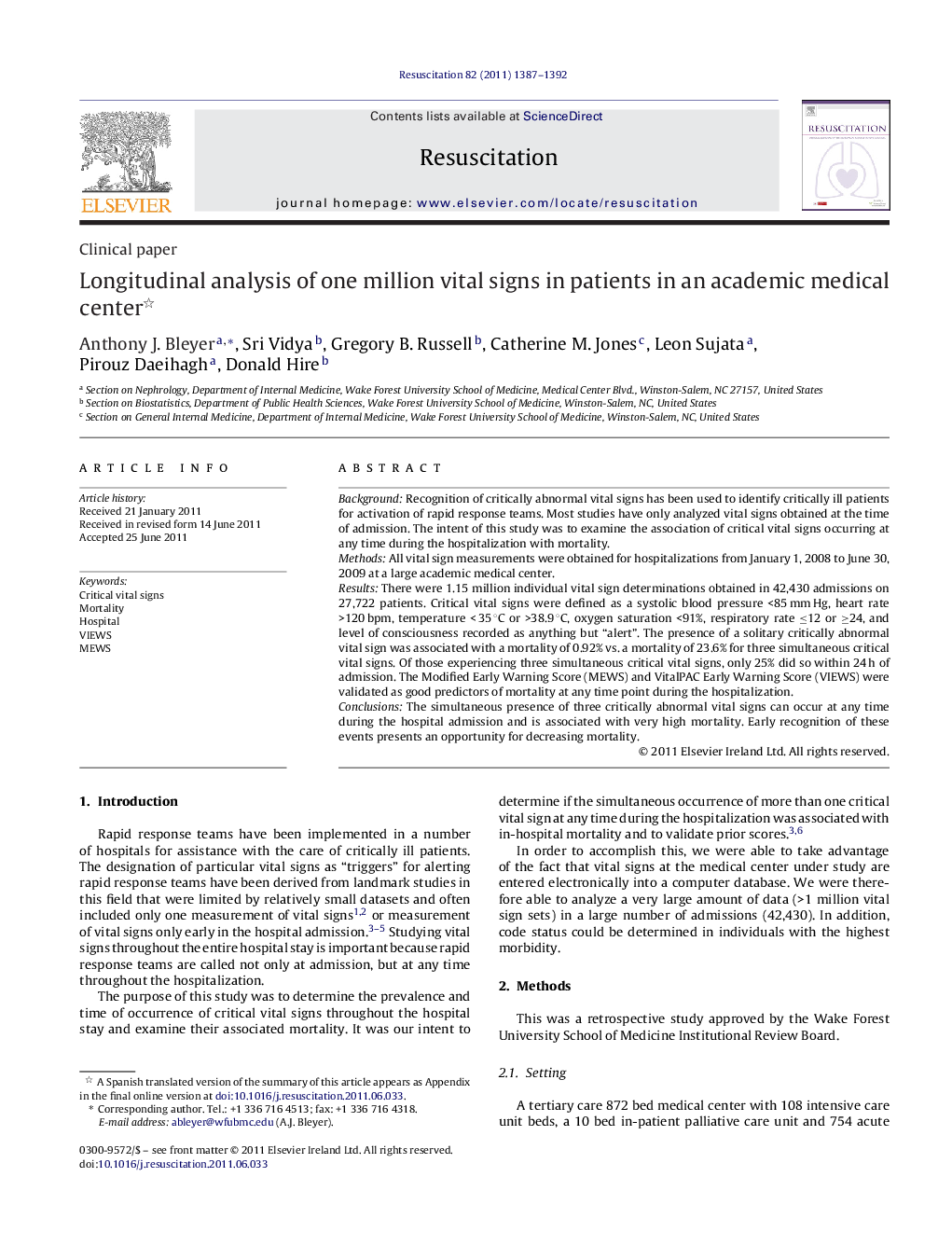| Article ID | Journal | Published Year | Pages | File Type |
|---|---|---|---|---|
| 3008942 | Resuscitation | 2011 | 6 Pages |
BackgroundRecognition of critically abnormal vital signs has been used to identify critically ill patients for activation of rapid response teams. Most studies have only analyzed vital signs obtained at the time of admission. The intent of this study was to examine the association of critical vital signs occurring at any time during the hospitalization with mortality.MethodsAll vital sign measurements were obtained for hospitalizations from January 1, 2008 to June 30, 2009 at a large academic medical center.ResultsThere were 1.15 million individual vital sign determinations obtained in 42,430 admissions on 27,722 patients. Critical vital signs were defined as a systolic blood pressure <85 mm Hg, heart rate >120 bpm, temperature < 35 °C or >38.9 °C, oxygen saturation <91%, respiratory rate ≤12 or ≥24, and level of consciousness recorded as anything but “alert”. The presence of a solitary critically abnormal vital sign was associated with a mortality of 0.92% vs. a mortality of 23.6% for three simultaneous critical vital signs. Of those experiencing three simultaneous critical vital signs, only 25% did so within 24 h of admission. The Modified Early Warning Score (MEWS) and VitalPAC Early Warning Score (VIEWS) were validated as good predictors of mortality at any time point during the hospitalization.ConclusionsThe simultaneous presence of three critically abnormal vital signs can occur at any time during the hospital admission and is associated with very high mortality. Early recognition of these events presents an opportunity for decreasing mortality.
